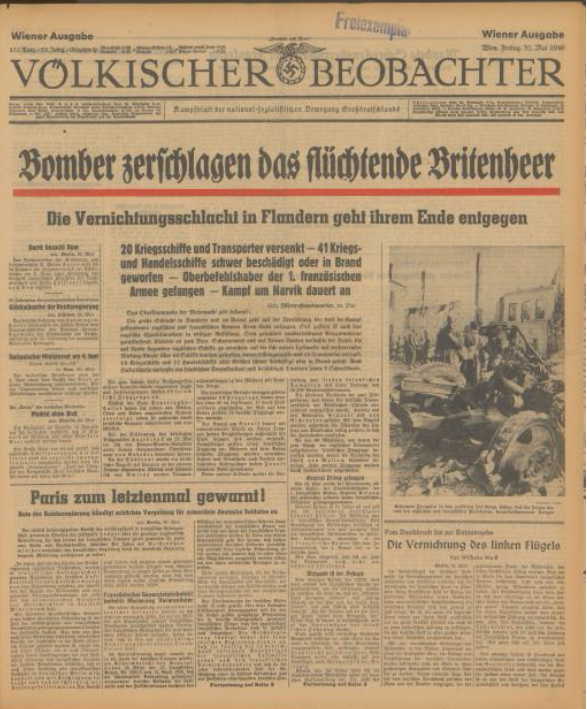Background: This page is part of a larger project to trace the history of World War II as reflected in the headlines of the Völkischer Beobachter, the Nazi Party’s daily newspaper.
May 1940 was a triumphant month from the Nazi viewpoint. By the end of the month Belgium and the Netherlands had capitulated and British and French forces were retreating everywhere. The war was going well from the German perspective.
Völkischer Beobachter: May 1940

“Führer Order to the Norwegian Fighters”
"I am Proud of You!"
2 May 1940
No Issue
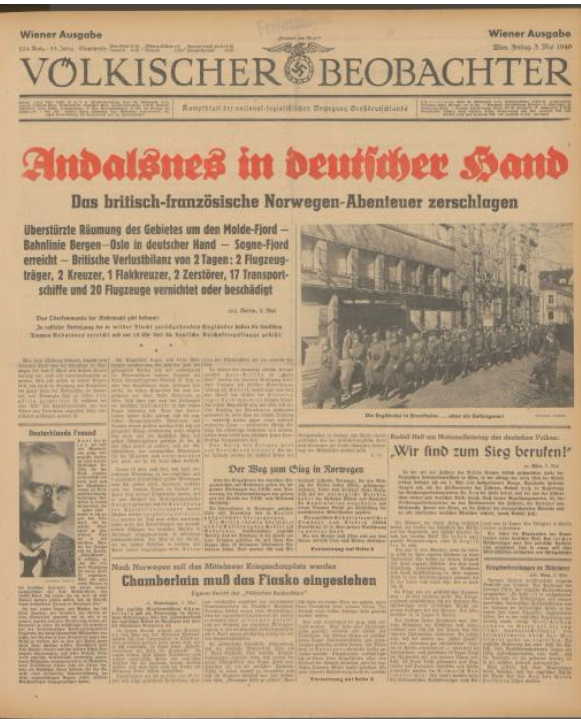
Åndalsnes in German Hands
The British-French Norwegian Plot Defeated
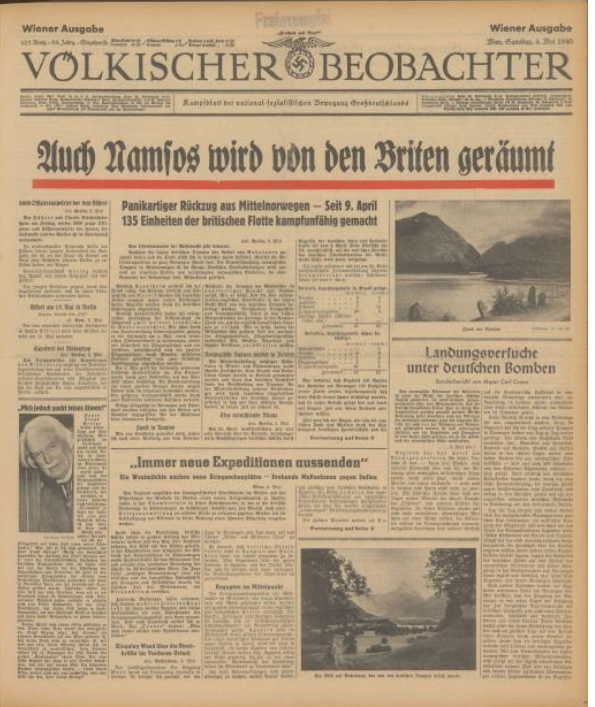
Namsos Also Cleared of the British
Panicked Withdrawal from Central Norway — 135 ships of the British Fleet Rendered Unfit for Combat Since 9 April
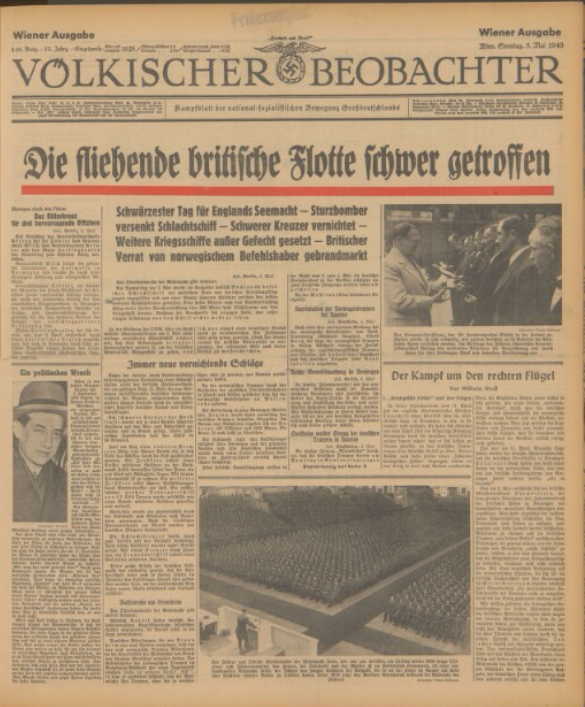
Fleeing British Fleet Hit Hard
Blackest Day for England’s Sea Power — Dive Bomber Sinks Battleship — Heavy Cruiser Destroyed — Other Warships out of Action — British Betrayal of Norwegian Commander Denounced

London Considers a New Desperate Step
The World Expects More Criminal Actions by the Allies against Neutrals
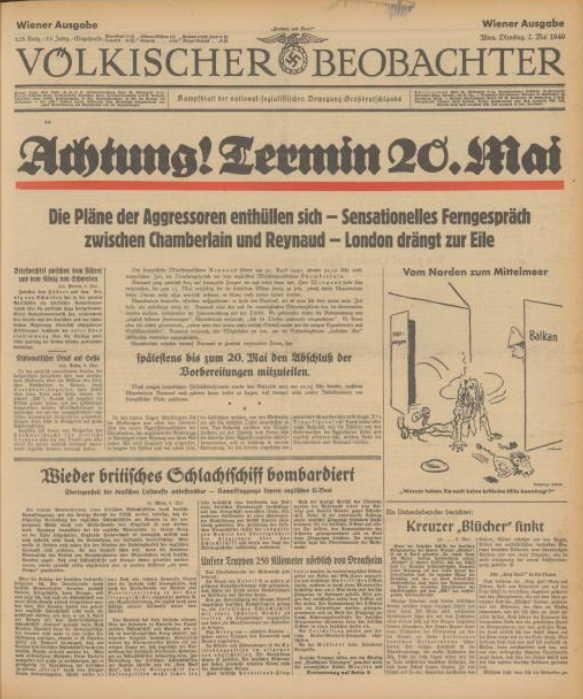
Attention! The Date is 20 May
Plans of the Aggressors Revealed — Sensational Telephone Conversation between Chamberlain and Reynaud — London in a Hurry
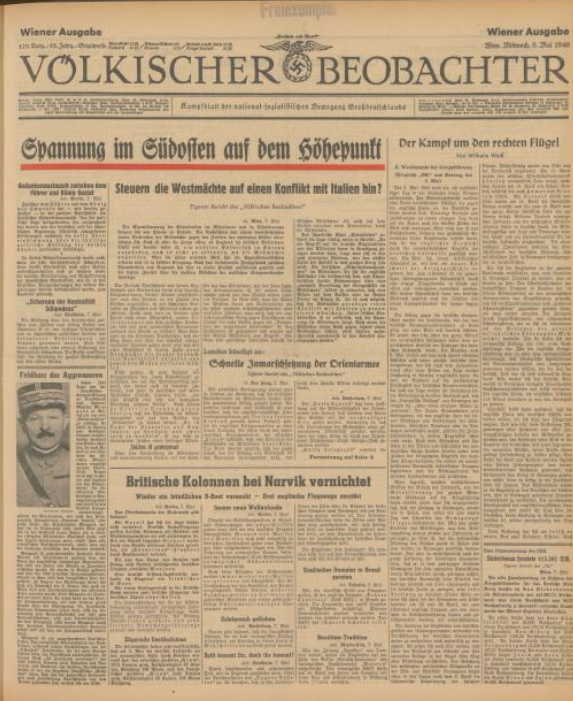
Tensions in the Southeast at a High Point
Are the Western Powers Heading toward a Conflict with Italy?
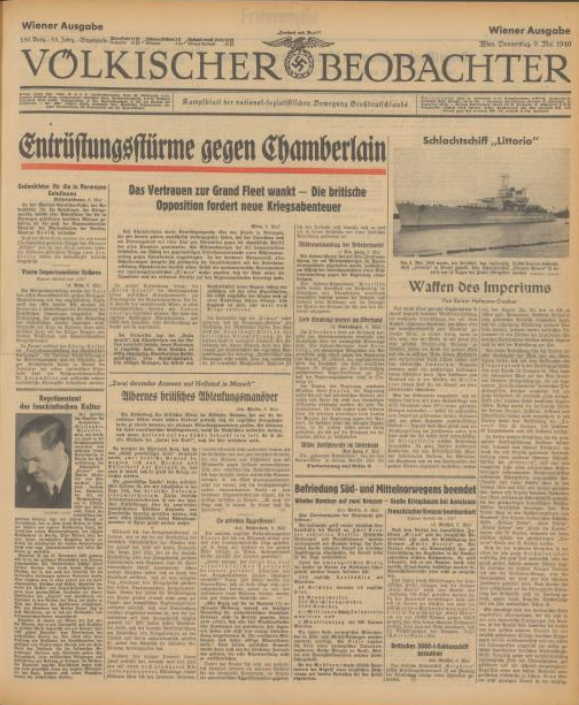
Disappointment in Chamberlain
Confidence in the Great Fleet Shaken — British Opposition Demands New War Efforts
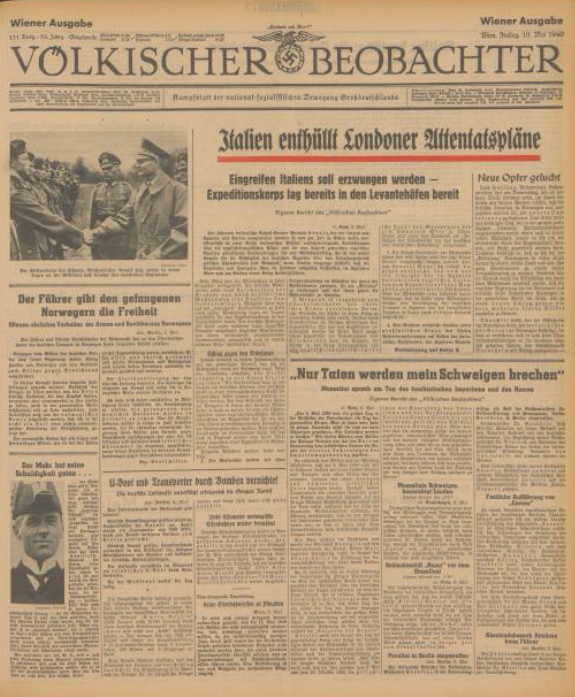
Italy Reveals London’s Coup Plans
Italian Attack to be Forced — Expeditionary Force Prepared in Levant Harbors
Italy was not yet in the war. The claim is that England and France are trying to find ways to draw Italy into the conflict.
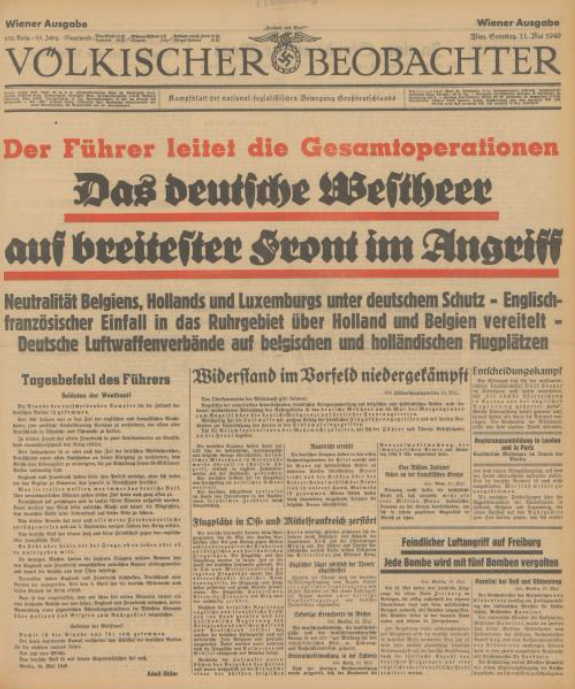
The Führer Directs the Entire Operation
The German Western Army Attacks along the Whole Front
Neutrality of Belgium, Holland, and Luxembourg under German Protection — English-French Attack through Holland and Belgium on the Ruhr Repulsed — German Luftwaffe Formations Attack Belgian and Dutch Airfields
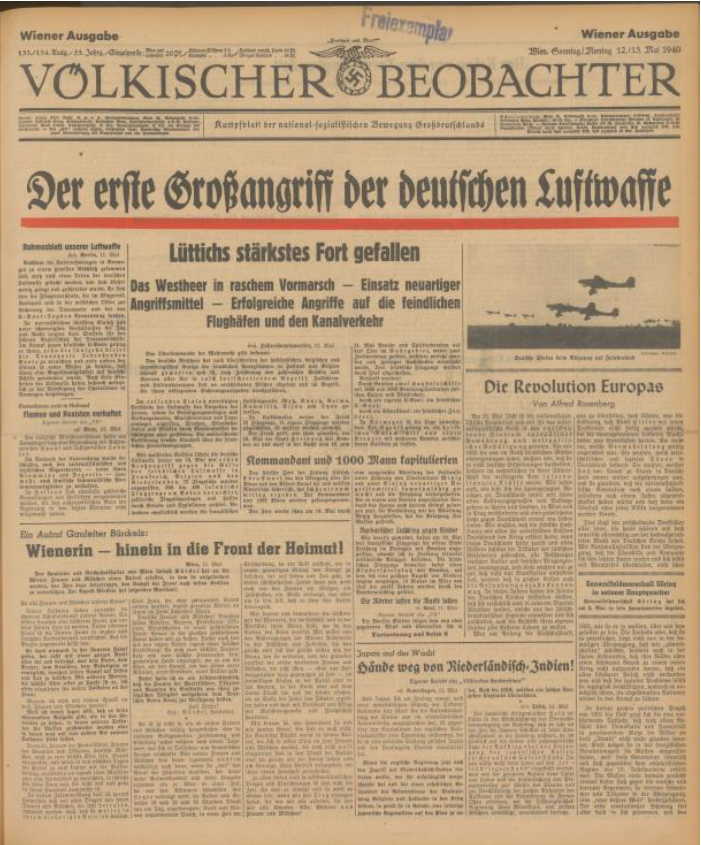
The German Luftwaffe’s First Major Attack
Lüttich’s Strongest Fort Falls — Western Army Rapidly Advances — Use of New Methods of Attack — Successful Attacks on Enemy Airfields and on Channel Traffic
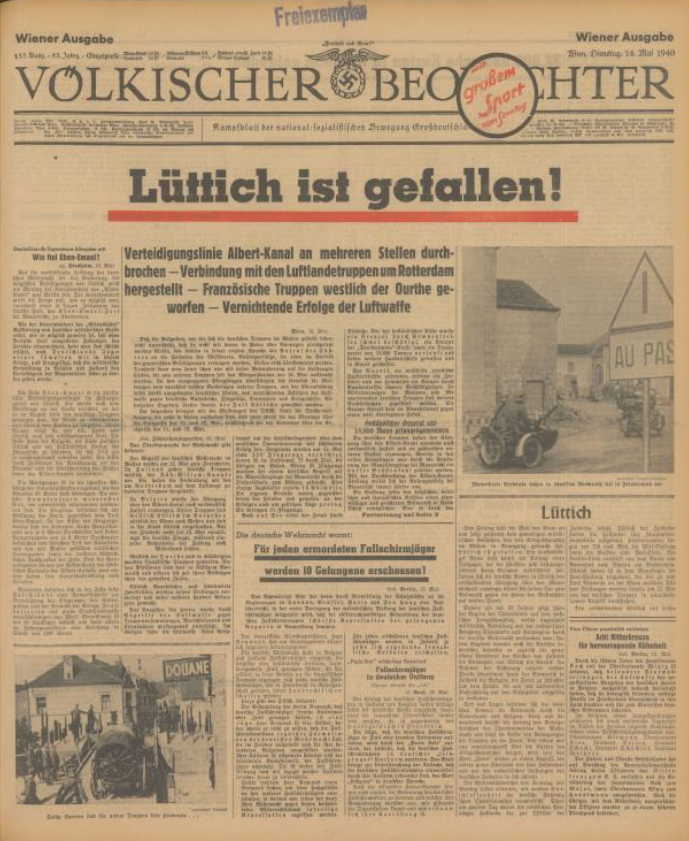
Liège Has Fallen!
Albert Canal Defensive Line Broken Through in Several Places — Connections Established with the Paratroopers in Rotterdam — French Troops West of the Ourthe Thrown Back — Destructive Successes of the Luftwaffe
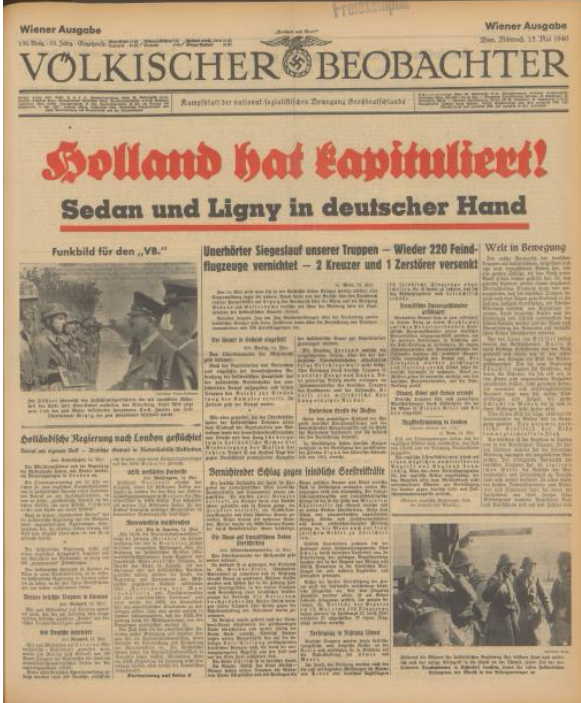
Holland Capitulates!
Sedan and Ligny in German Hands
Unprecedented Victories by Our Troops — 220 More Enemy Planes Destroyed — 2 Cruisers and 1 Destroyer Sunk
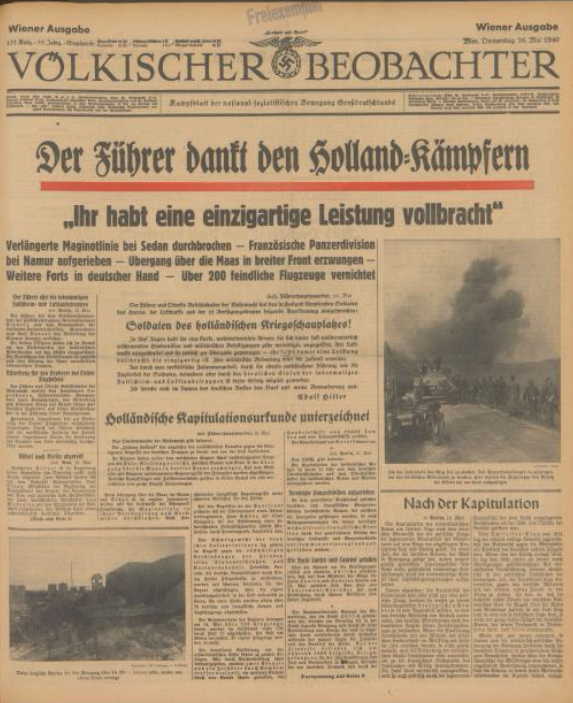
The Führer Thanks the Holland Fighters
“You Have Done Something Unique”
Extended Maginot Line Broken Through near Sedan — French Tank Division near Namur Destroyed — Maas Crossed along a Broad Front — Further Forts in German Hands — Over 200 Enemy Aircraft Destroyed
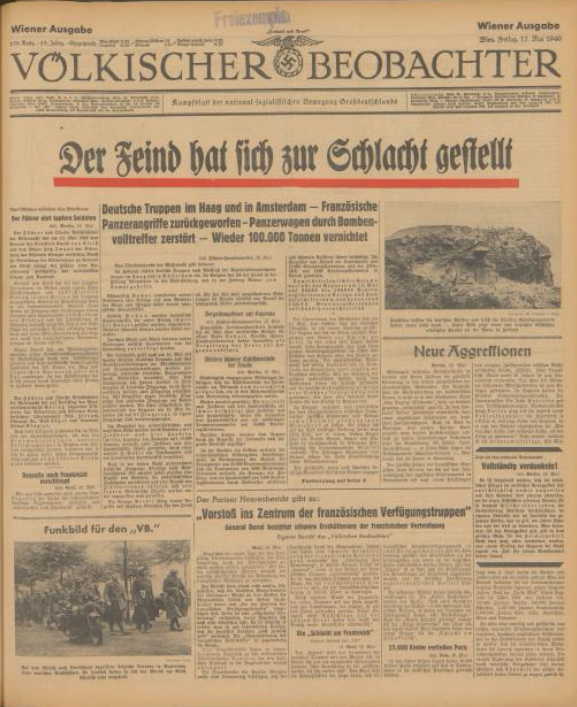
The Enemy Prepares for Battle
German Troops in den Haag and Amsterdam — French Tank Attack Repulsed — Armored Vehicles Destroyed by Bombs — Another 100,000 Tons Destroyed
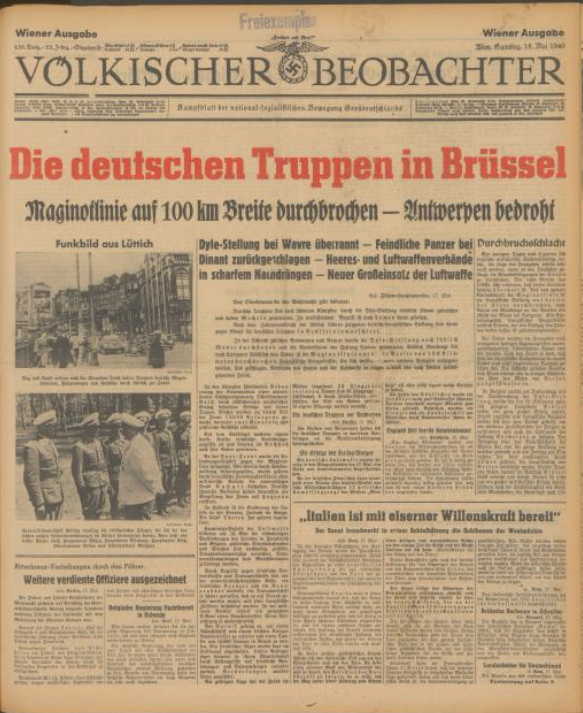
German Troops in Brussels
Maginot Line Broken Through over 100 Kilometers —Antwerp Threatened

Fortress Antwerp Falls
German Panzer Corps Reach the Oise
Two Enemy Infantry Divisions Defeated — The Island Province Zealand Capitulates — Revenge Measures by the German Luftwaffe Announced — Mines Laid Near South African Harbors

Storm Attacks along the Entire Front
Eupen and Malmedy Incorporated into the Reich
110,000 Prisoners in France and Belgium — Further 147 Aircraft Destroyed — Dr. Seyß-Inquart Appointed Reich Commissar for the Netherlands

German Troops Storm Laon
French Breakout Attempts Fail — The British Retreat in Disorder — Upper Scheldt Reached — New Blows against the Enemy Fleets

Breakthrough to the English Channel Succeeds
The Western Powers Reap the Harvest of their War
French-English-Belgian Army in the North Cut Off — Luftwaffe Delivers Destructive Flows to the Fleeing British — Commander of the French 9th Army captured
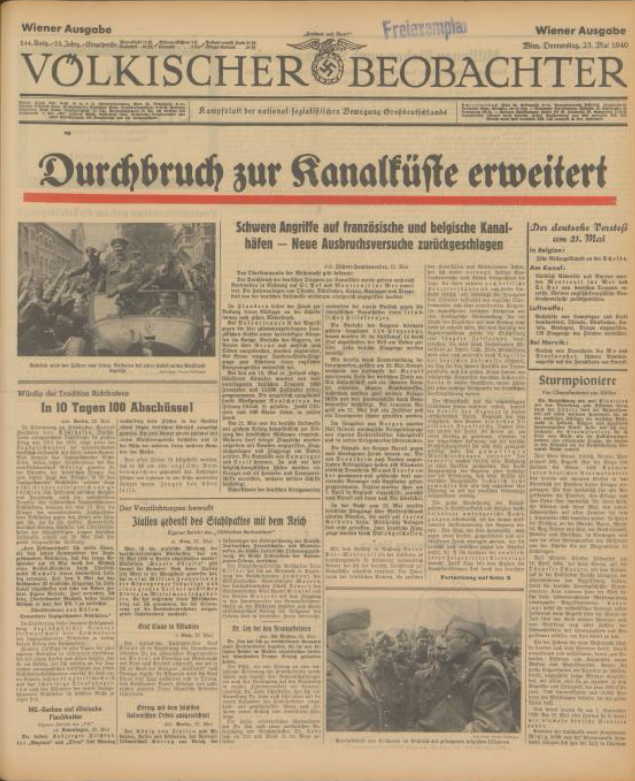
English Channel Breakthrough Extended
Heavy Attacks on French and Belgian Channel Ports — New Breakout Attempts Repulsed
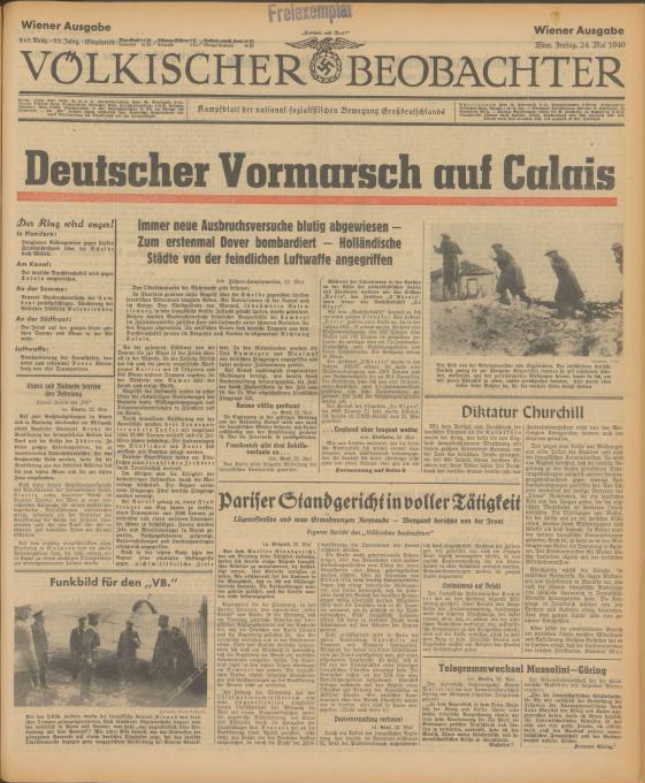
German Advance on Calais
Constant Attempts at Breakout Bloodily Repulsed — Dover Bombed for the First Time — Dutch Cities Attacked by Enemy Air Forces
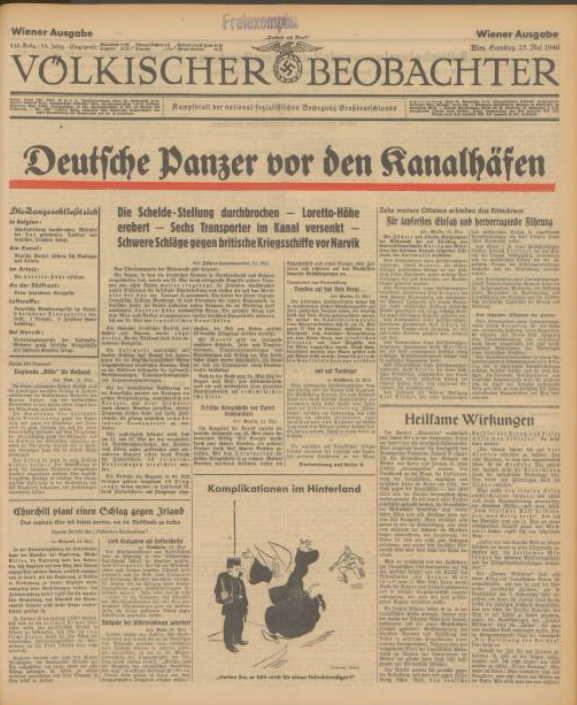
German Tanks Near English Channel Harbors
The Scheldt Position Captured — Loretto Heights Taken — Six Transports Sunk in the Channel — Heavy Blows against British Warships at Narvik
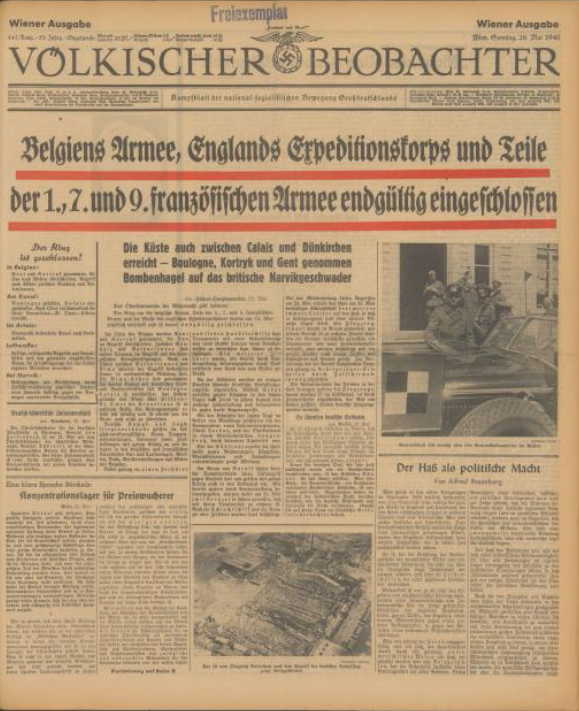
Belgian Army, England’s Expeditionary Force, and Parts of the 1st, 7th, and 9th French Armies Surrounded
Coast between Calais and Dunkirk Reached — Boulogne, Kortrijk, and Ghent Captured — Hail of Bombs on the British Narvik Squadron
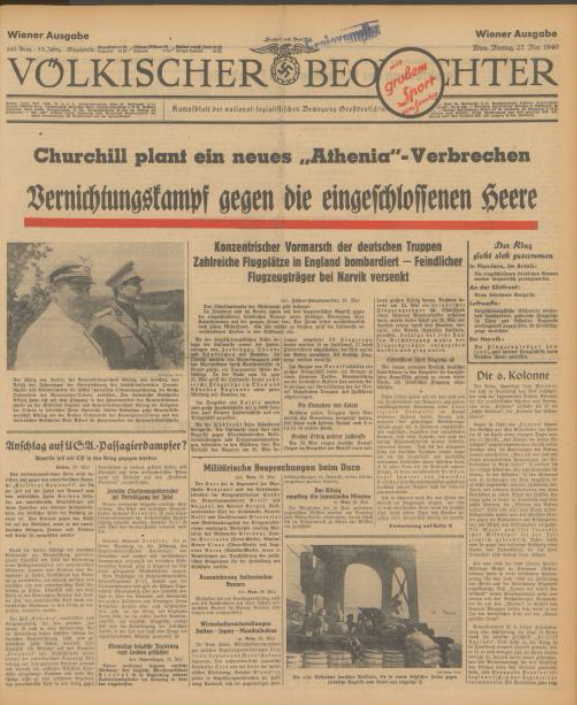
Churchill Plans New “Athenia” Crime
Battle of Annihilation against the Surrounded Army
Concentrated Advance of German Troops — Numerous English Airfields Bombed — Enemy Aircraft Carrier Sunk at Narvik
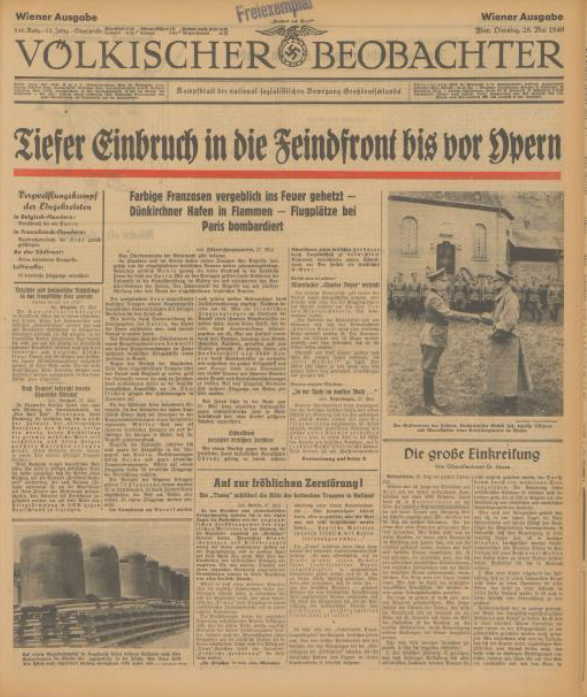
Deep Breakthrough in the Enemy Front along the Ypres
Colored French Through in Vain into the Fire — Dunkirk Harbor in Flames — Airfields near Paris Bombed
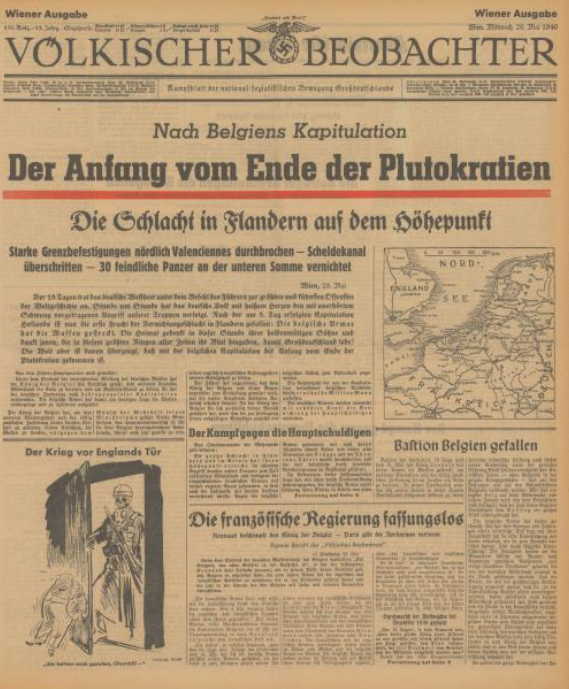
After Belgium’s Capitulation
Beginning of the End for the Plutocrats
Battle of Flanders at Its High Point
Strong Border Fortifications North of Valenciennes Broken — Scheldt Canal Crossed — 30 Enemy Tanks Destroyed on the Lower Somme
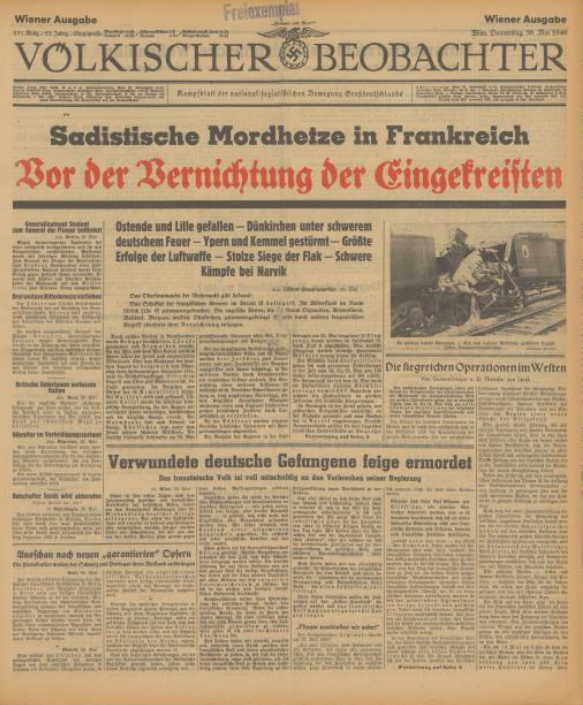
Sadistic Agitation for Murder in France
The Encircled Face Destruction
Ostend and Lille Fall — Dunkirk under Heavy German Fire — Ypres and Kemmel Stormed — Great Luftwaffe Successes — Proud Victories by Flak Forces — Heavy Fighting Near Narvik
